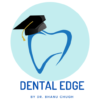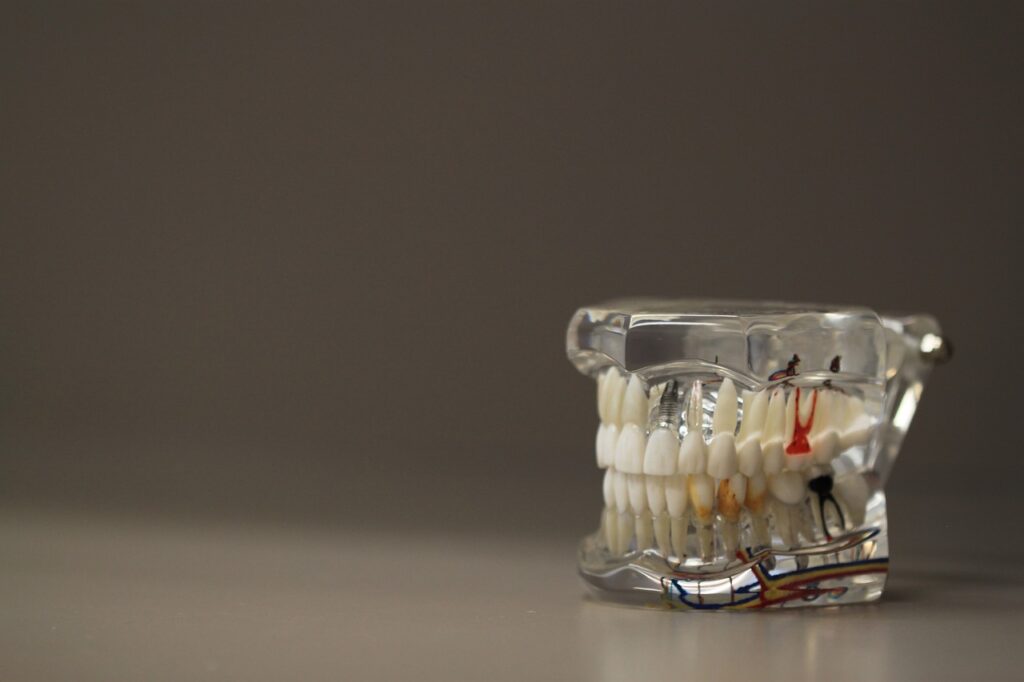In this article you will find all the basic terms you need to know as a dentistry student.
For video lecture – https://www.youtube.com/playlist?list=PLhlBXP-xBJ_ccv4y7mhQe_RJ1nj71fizD
1. Dentition – All the teeth in upper and lower jaw bones are called as dentition.
2. Deciduous dentition – It is the primary set of teeth present during childhood which eventually shed off or gets exfoliated. Deciduous teeth are 20 in number.
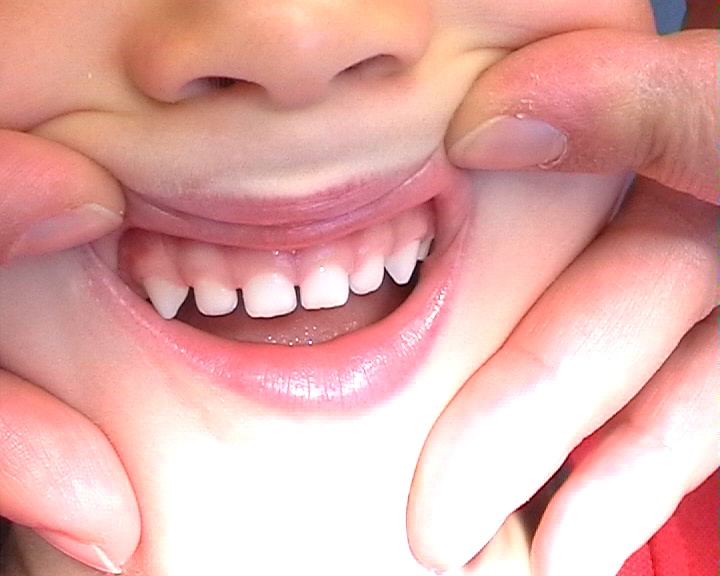
3. Permanent dentition – It is the secondary set of teeth present during the adulthood and which replaces the deciduous teeth.
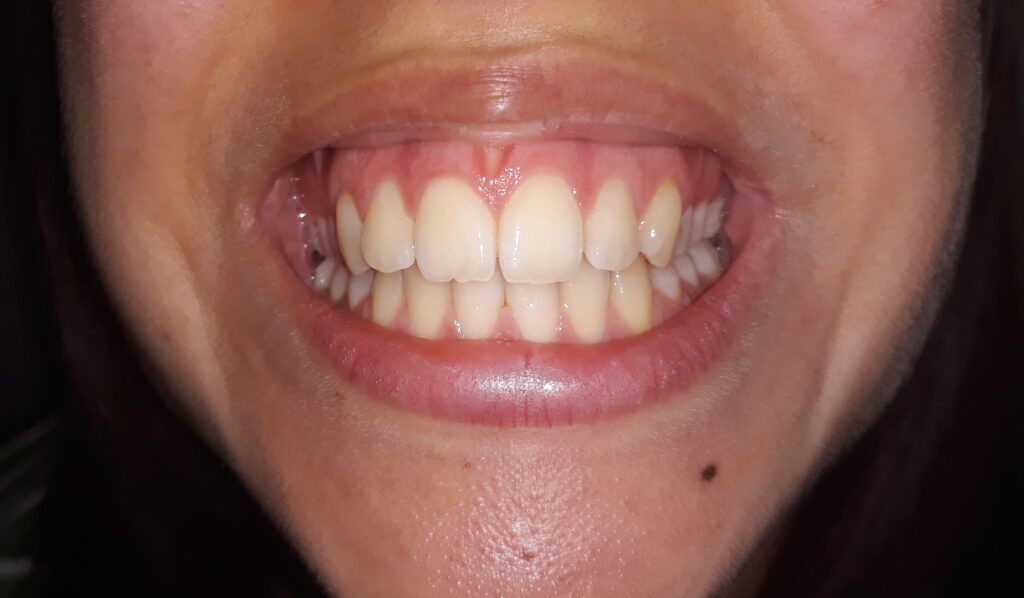
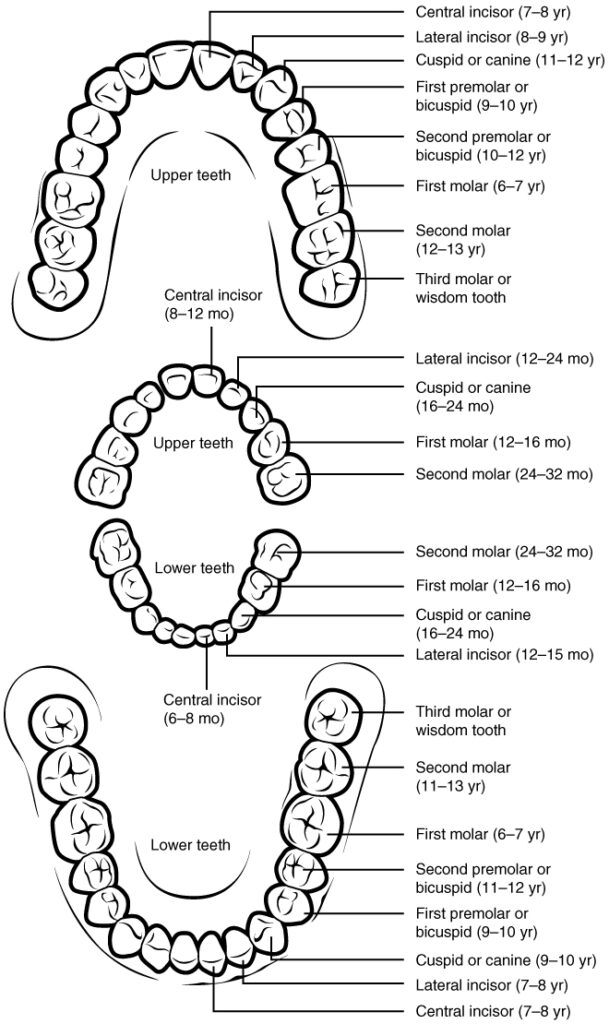
4. Mixed dentition – It is the combination of permanent and deciduous teeth in the same dentition.

5. Diphyodont – It is the condition where 2 sets of teeth exist. E.g. mammals have both primary and permanent teeth.
6. Accessional – Permanent teeth that do not replace deciduous teeth but rather become an accession (an addition) to the deciduous or succedaneous teeth or to both types.
7. Succedaneous teeth – Permanent teeth that succeed or take the place of deciduous teeth after they are shed i.e. incisors, canines & premolars.
8. Quadrant – One fourth of the dentition. The maxillary & mandibular arches are divided into right & left quadrants.

9. Incisors – Cutting & shearing teeth present anteriorly. They are four in number in each arch & carry out the function of punching & cutting food material during the process of mastication.

10. Canines – Third teeth from the midline, placed at the corner of mouth. Functioning for tearing & grasping of food. They are also called as cuspids. They are present singly in each quadrant.

11. Premolars – Teeth present posterior to canines and anterior to molars. They are four in number in each arch. They function as tearing & grinding teeth.

12. Molars – Teeth present posterior to premolars, with a large crown functioning in mastication & comminution of food.

13. Bicuspid – The teeth which is having 2 cusps. Maxillary premolars are often referred to as bicuspids.
14. Interdental – Area present between the teeth.
15. Interproximal space– Triangular shaped spaces found between adjoining teeth. The base of triangle is alveolar process, sides of triangle are proximal surfaces of contacting teeth & apex of triangle is in the area of contact.
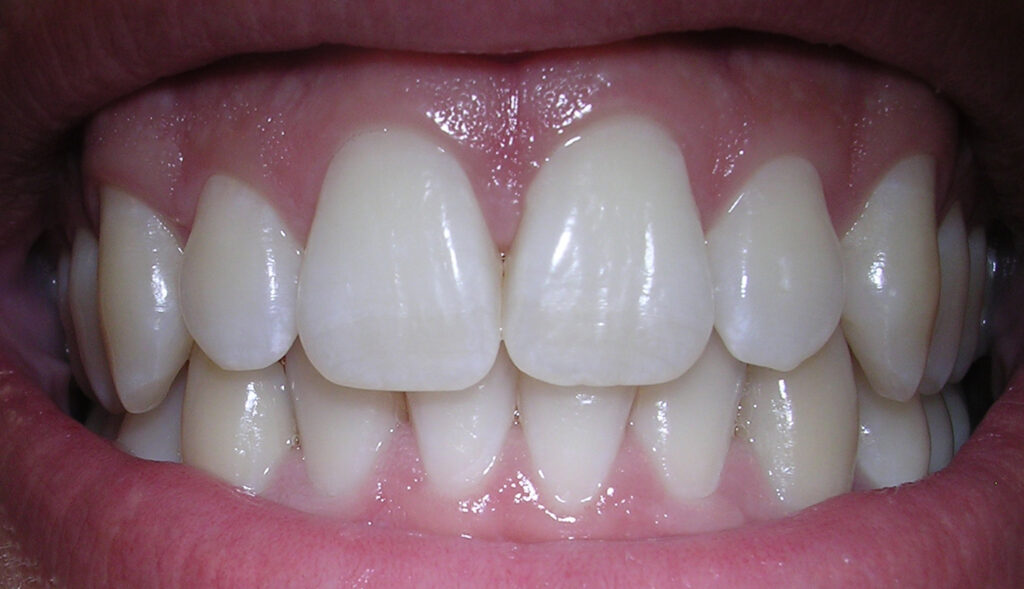
16. Facial – Collective term given to surfaces of teeth towards lip (Labial) & cheek (Buccal).
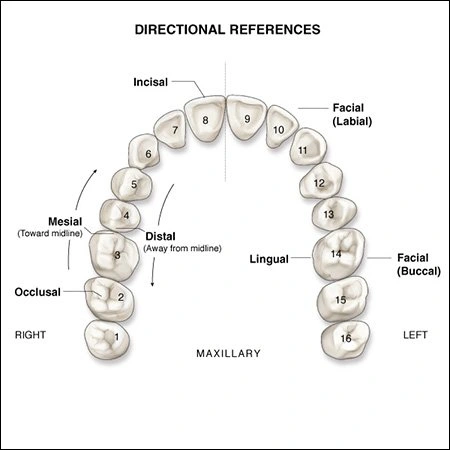
17. Lingual – Surfaces facing towards the tongue.
18. Palatal – Surfaces of maxillary teeth towards the palate.
19. Distal surface – It is the proximal surface distant from midline.
20. Mesial surface – It is the proximal surface towards the midline.
21. Anatomic crown – It is the part of a tooth covered by the enamel.
22. Clinical crown – It is the portion of tooth visible in the oral cavity & is limited by the gingival margin or gums.
23. Cervix – Cervical portion of the tooth in the region of junction of crown and root.
24. Cervical line – It is the cementoenamel junction separates the anatomic crown from anatomic root.
25. Anatomic Root – Portion of the tooth covered by cementum.
26. Clinical Root – is that part of a tooth which is covered by gingiva & is not exposed to oral cavity.
27. Root trunk – Portion of the multirooted teeth found between the cervical line & point of bifurcation or trifurcation.
28. Furcation – is the place on multirooted teeth where the root trunk divides into separate roots. E.g. Bifurcation= premolars, trifurcation = molars.
29. Apex – End point or farthest tip, as of a tooth root.
30. Apical foramen – Aperture or opening at or near the apex of a tooth root through which the blood & nerve supply of the pulp enters the tooth.
31. Line angle – It is the angle formed by the junction of two surfaces. It derives its name from the combination of two surfaces that join. E.g. Mesio -labial line angle.
32. Point angle – It is formed by the junction of three surfaces. It derives its name from the names of the surfaces forming it. E.g. Mesio-bucco-occlusal point angle.
33. Axial surface – It is the surface of the tooth which is parallel to the long axis of the tooth.
34. Axial wall – Any wall on the axial surface parallel to the long axis of tooth.
35. Contact area – Area on the proximal surface of the adjacent teeth of same dental area that come in contact with each other.
36. Axial angle – It is the angle parallel to the long axis of tooth.
37. Inclined or sloping area – It is the sloping area of the occlusal surface of the premolars and molars. Each cusp has an inclined area.
38. Cingulum – Lingual lobe of an anterior tooth which makes up the bulk of the cervical third of the lingual surface.
39. Cusps – It is the elevation on the crown portion of a tooth making up a divisional part of the occlusal surface.
40. Embrasures – A V-shaped space present in proximal aspect of any of the adjacent teeth in contact. Embrasures make spill brace for food during mastication and prevent food from being escaped into the contact area.
41. Fissure – It is the deep developmental cleft formed in the occlusal surfaces and buccal surfaces of a tooth resulting from the imperfect fusion of the enamel of adjoining dental lobes.
42. Grooves – It is the shallow linear depression on the tooth surface.
43. Pit – Pits are small pinpoint depressions located at the junction of two or more developmental grooves or at its terminals.
44. Developmental Grooves– Sharply defined groove or line separating the lobes or primary parts of the crown or root.
45. Lobe – One of the primary sections of formation in the development of the crown. The cusps of posterior teeth & mamelons of anterior teeth represent lobes.
46. Sulcus -A long depression or valley on the occlusal surface of the posterior teeth, the inclines of which meet an angle. A sulcus has a developmental depression at the junction of their inclines.
47. Fossa – A depression or concavity on lingual surfaces of anterior & occlusal surface of posterior teeth.
48. Mammelons – Are the 3 rounded protuberances found on the incisal ridges of newly erupted incisor teeth. They represent the developmental grooves.
49. Ridges – It is any linear elevation on the tooth surface.
50. Incisal ridge – It is the linear elevation seeing on the Incisal surfaces of the incisors.
51. Marginal-ridge – It is the rounded borders of the enamel that forms mesial and distal margins of the occlusal surface of the molars and premolars.
52. Triangular ridge – It is the linear elevation that descends from the tip of the cusps of the molars and premolars towards the central part of the occlusal surface.
53. Oblique ridge – It is the ridge crossing obliquely occlusal surfaces of the maxillary molars. It is formed by the union of the triangular ridge of distobuccal cusps and distal cuspal ridges of mesiolingual cusps.
54. Transverse ridge – It is the union of two triangular ridges crossing the occlusal surface of a posterior tooth in a transverse direction.
55. Set trait – Distinguish the teeth in the primary dentition from the permanent dentition.
56. Arch trait – Distinguish maxillary from mandibular teeth.
57. Class trait – Distinguishes the four classes of teeth namely incisors, canines, premolars & molars.
58. Type trait – The differences between the teeth of same class of same arch.
59. Canine eminence – Bony ridge of the maxilla over the labial portion of the root of the maxillary canines.
60. Impacted tooth – The tooth which is prevented from getting erupted into the oral cavity due to some mechanical barriers.
61. Embedded teeth – Tooth prevented from erupting into the oral cavity due to the lack of some erupting forces.
62. Occlusion – It is defined as the contact relationship of the maxillary and mandibular teeth when they approach each other as occurs during chewing or at rest.
63. Centric occlusion – Maximum intercuspation or contact attained between maxillary and mandibular posterior teeth.
64. Centric relation – Most posterior position of the mandible relative to the maxilla at a given vertical dimension.
65. Curve of spee –Anteroposterior curvature of the occlusal surfaces, beginning at the tip of the mandibular cuspid and following the buccal cusps of premolars and molars continuing as an arc through the condyle. This is observed from the point opposite to that of the Ist molars and is seen only in the sagittal plane.
66. Intercuspation – It is the relationship of cusps of molars and pre-molars of one jaw to that of opposite jaw during any occlusal relationship.
67. Cusp of Carrabelle – It is the 5th cusp of maxillary 1st molars seen on the mesiopalatal surface of the mesiopalatal cusp.
68. Curve of Wilson – is the mediolateral curve that contacts the buccal and lingual cusps of each side of the arch. It results from inward inclination of lower posterior teeth, making lingual cusps lower than the buccal cusps on mandibular arch, and an outward inclination of maxillary posterior teeth.
69. Curve of Monson – Curve is obtained by extending the curve of spee & curve of Wilson to all cusps & incisal edges.
70. Diastema – Any spacing between teeth present in same arch is called Diastema.
71. Inclined or median Diastema – It is the space present between two incisors.
References –
- Books Referred – https://www.amazon.in/shop/dentaledgebydr.bhanuchugh?ref_=cm_sw_r_cp_ud_aipsfshop_aipsfdentaledgebydr.bhanuchugh_JCYKHFH6G2T2SR9RSA3W
- Image Attribution – Wikipedia
